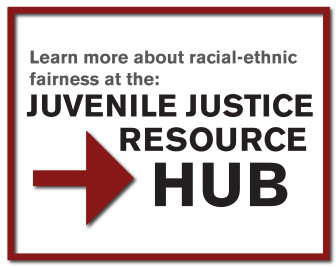 Sometimes it takes a tragic and heartrending story of a single human being to move broad public policy. In the instance of the solitary confinement of youth, the catalyst was the case of Kalief Browder. An African-American 16-year-old, Browder was wrongly charged with theft of a backpack in May 2010 and held for three years at Rikers Island after a judge set his bail at $3,000, an amount the teenager’s family could not post.
Sometimes it takes a tragic and heartrending story of a single human being to move broad public policy. In the instance of the solitary confinement of youth, the catalyst was the case of Kalief Browder. An African-American 16-year-old, Browder was wrongly charged with theft of a backpack in May 2010 and held for three years at Rikers Island after a judge set his bail at $3,000, an amount the teenager’s family could not post.
Browder was then confined with hundreds of other 16- to 18-year-olds in a section of Rikers where brutal attacks by guards and fights among inmates were common. He was targeted by gangs, beaten by officers and told that if he reported the incidents to medical staff he would be sent to solitary confinement.
Meanwhile, Browder’s criminal charges were caught up in the extreme backlog of the Bronx court system. Because he repeatedly refused to plead guilty, his case was set for trial. Yet delays caused by court congestion kept pushing back the trial date.
Not long after arriving at Rikers, Browder was placed in solitary for two weeks following a scuffle with an inmate. Six months later, another fight led to his second trip to solitary, where he remained for about 10 months. Even in isolation the threat of violence is a reality, however, and a tense exchange of words triggered an attack on Browder by a guard.
As the months turned into years, Browder became depressed and lost weight. After he tried to hang himself with a bed sheet, he was returned to solitary.
Browder’s case was ultimately dismissed in May 2013 after 31 court dates and three years at Rikers, the majority of which he spent in isolation. The alleged victim had left the U.S. and the prosecutor acknowledged that they were “unable to meet our burden of proof at trial.”
Although Browder made some strides after his release, including earning his GED, finding a part-time job and starting classes at Bronx Community College, the damage of incarceration and isolation had already been done. His mental health rapidly deteriorated, and on June 6, 2015, he committed suicide at his parents’ home in the Bronx. He was 22.
Earlier this week, President Barack Obama invoked Kalief Browder, his time in isolation and his suicide in an op-ed in the Washington Post announcing a ban on the solitary confinement of juveniles in the federal prison system, among other critical reforms that would also affect the 10,000 adult inmates serving time in isolation.
After relating the facts of Browder’s life, the president wrote, “How can we subject prisoners to unnecessary solitary confinement, knowing its effects, and then expect them to return to our communities as whole people? It doesn’t make us safer. It’s an affront to our common humanity.”
Although the federal Bureau of Prisons is responsible for fewer than 100 juvenile inmates, with only a handful placed in “restrictive housing,” the president’s executive action reflects a broader recognition of the need to treat adolescents and young adults differently based on their cognitive and psychological capacities. The ban also is likely to trigger reforms on the state level of solitary confinement policies for both youth and adult inmates, including those with mental illnesses. The U.S. Department of Justice has estimated that more than 57,000 juvenile offenders are incarcerated in jails and prisons across the U.S., with many held in solitary confinement.
One important aspect of the discussion of the solitary confinement of youth that has received little attention is the role of race and socioeconomic status. Research has demonstrated that young people of color — like Kalief Browder — are more likely to be placed in the juvenile and adult court systems, to remain in them longer and to experience more punitive sanctions than whites.
This trend is true even when controlling for a variety of factors, including the severity of the offense, and it is particularly true for drug and weapon possession cases, despite higher rates of drug use and possession by white youth than youth of color.
[Related: Important First Steps to End Solitary Confinement for Youth in Federal Prisons]
Similarly, families of means inevitably have greater access than low-income families to voluntary mental health services and other services to treat conditions that can trigger referrals to juvenile court as well as contribute to the likelihood of probation violations. Browder, for instance, had previously been on probation as a “youthful offender” for joyriding, which the judge cited as the reason for holding him after the theft charge. Wealthier families are also more likely to be able to post bail, which Browder’s family could not do.
These trends are compounded by probation officers who assume that all impoverished neighborhoods are high risk and dangerous for youth, increasing the likelihood that they will recommend incarceration for these adolescents, rather than community-based treatment or counseling.
 With higher percentages of children of color and poor children charged and then detained in the juvenile and criminal justice systems, higher percentages of them are consequently held in solitary confinement.
With higher percentages of children of color and poor children charged and then detained in the juvenile and criminal justice systems, higher percentages of them are consequently held in solitary confinement.
At the vast majority of juvenile detention centers, often the only hope for young people held in prolonged isolation lies with lawyers or other youth advocates willing to expose the practice, report it to the appropriate parties and advocate for its ban.
Kalief Browder, like many low-income youth, did not receive rigorous legal representation. He was appointed a lawyer who never made the trip to Rikers to visit him and rarely, if ever, spoke with him between court dates.
Attorneys representing incarcerated young people should regularly ask their clients about the conditions of confinement and specifically question them about isolation practices: whether solitary confinement is used, under what circumstances, its duration, whether there is any debriefing following its use and whether alternative strategies are ever utilized.
If an attorney suspects the excessive use of isolation, she should immediately bring the situation to the judge’s attention at a hearing reviewing the conditions of confinement. If these types of hearing are not mandated in the client’s jurisdiction, she should file a motion for review of the conditions of confinement. The lawyer should also contact the administrator or the licensing or regulatory agency for the facility holding the juvenile.
Unfortunately, prisoners’ legal services have become increasingly limited as legal aid budgets are cut and offices are forced to discontinue these programs. Because of this, every correctional facility should have an inmate-grievance system with counselors who address both routine and emergency complaints. Every facility should also have the equivalent of an institutional ombudsperson available for adolescent inmates to raise claims or express concerns related to their conditions of confinement.
With this week’s executive action ending the solitary confinement of juveniles in federal prisons, President Obama has continued to shine a spotlight on some of the most egregious aspects of the criminal justice system. He is the first sitting president to visit a federal prison. His initiative My Brother’s Keeper has funded housing programs for adults and juveniles just released from prison and established second-chance programs to give young offenders the opportunity to enter the workforce.
Kalief Browder’s short life continues to have meaning. As the president wrote in his Washington Post op-ed, “Today, [solitary confinement] is increasingly overused on people such as Kalief, with heartbreaking results — which is why my administration is taking steps to address this problem.”
Tamar Birckhead is a criminal defense attorney, law professor and director of clinical programs at the University of North Carolina at Chapel Hill School of Law.
More related articles:
Nebraska’s Solitary Policies Vary Widely, Need Reform, Says ACLU
NY Activists Urge End to Solitary Confinement in Corrections
Heartbreaking story, but at least public policy is moving in the right direction!
Thank you so very much.
I absolutely agree that attorneys and advocates can and should play a role in protecting youth (and adults) from conditions that inhumane. I have been so impressed by the legal work done by so many. It inspiring when lawyers selflessly pour countless hours into pro-bono cases solely because they feel it is the right thing to do as human beings.
I also believe that the kinds of points raised by people like Mr. Reginald Dwayne Betts about whether prisons are helpful in many cases are right on. There is systemic change in our justice system that is sorely needed. People who are not a very serious current risk to others should not be held in a prison. People who are held in a prison should not be subject to torture. These are issues that both the legal community, legislatures and others can and should take on.
I am always inspired when I read the stories of people who have survived these horrible experiences and are working to rebuild their lives and advocate for change. Telling their stories takes tremendous courage. The act of telling these stories paves the way for a more humane and compassionate future for others. These people who are telling their stories are some of the greatest heroes of our day. There is not a single story I have read that has made me feel that the person sharing their story was not a good human being and a valuable part of our community.
That is not because any of these stories are necessarily radically unusual, although I find each one special and amazing in its own way. It is because there is not a single person on the planet who is irredeemable or whose life is not full of the most magnificent potential and worthiness. All these lives have tremendous worth and value. A person whose story we can hear and still feel that they are truly different from us in a bad way does not exist. There is no such person. We are all made of the same stuff. We need to understand more than to judge.
No one should be treated disrespectfully, and certainly no one should be tortured. I am inspired when lawyers and others with particular skills that can be useful in these discussion choose to stand in solidarity with people who have been very hurt.
I am also inspired by the ongoing work of correctional institutions to change policies which may have been well-intentioned but which are not necessarily constructive upon further examination. Many are galvanized to make huge changes and many have already taken enormous steps. Their work takes courage and creativity too. This work is commendable as well and also deserves much praise.